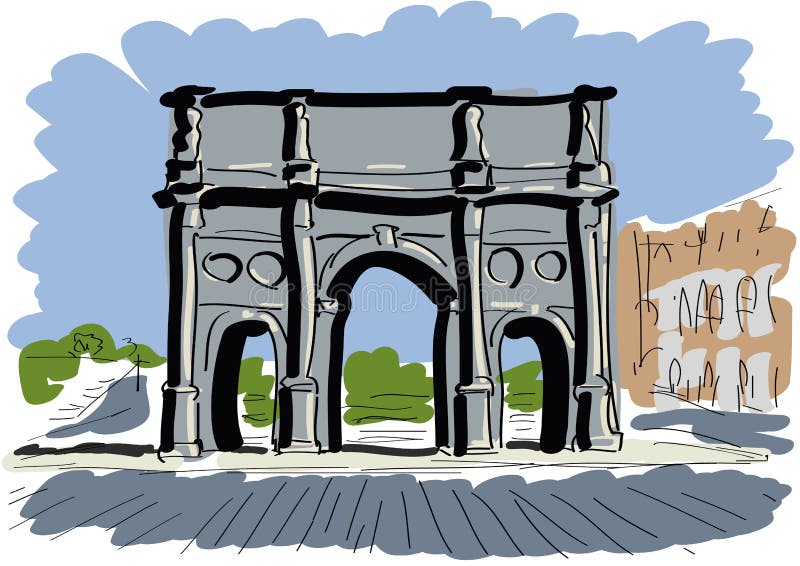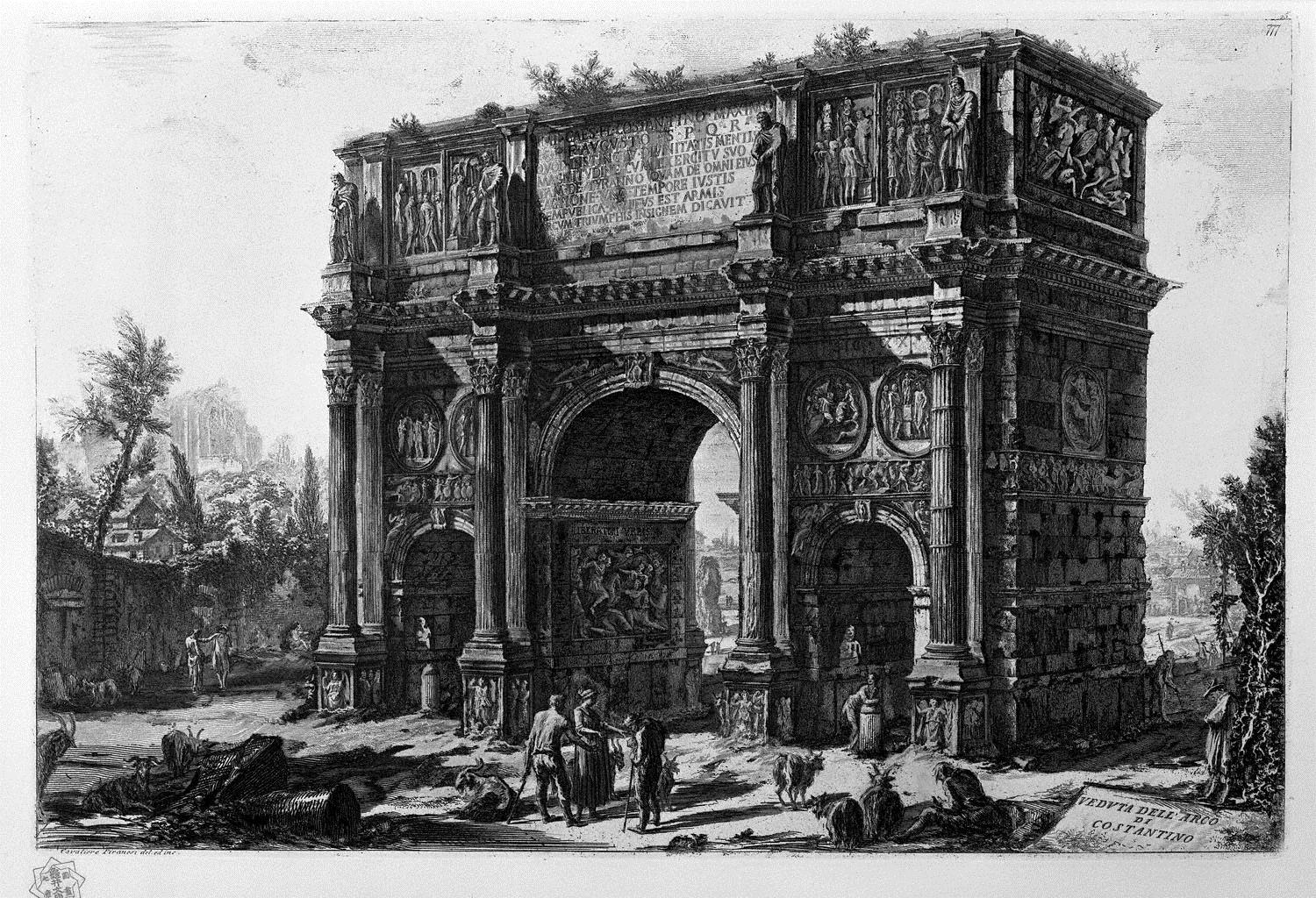
On the north façade, the left side depicts the emperor addressing the people in the Forum, while the right side shows Constantine distributing money. The left side of the south façade depicts the siege of Verona, while the right side of the south façade shows the battle against Maxentius. The frieze scenes below each pair of medallions, were specifically sculpted for the arch. The Corinthian columns were commandeered from a first century Flavian monument, with the Dacian prisoners standing above them possibly being taken from an unknown monument to Trajan. The first two panels show Trajan or Domitian (again with the head altered to represent Constantine) charging at barbarians on his horse, and the emperor being crowned by Victory, flanked by females possibly representing Honour and Virtue, dressed respectively as an Amazon and in armour. The white marble reliefs in the two inner central arches, slightly altered, are from the Great Trajanic Frieze taken from the Basilica Ulpia in the Forum of Trajan. The eight white Luna marble tondi on the north and south façades are reused from a lost monument dedicated to Hadrian, and are set in pairs depicting various hunting scenes, and sacrificial ceremonies to Hercules, Apollo, Diana, and Silvanus. The head of the emperor on these images has been re-cut to resemble Constantine. The arch features eight marble panels, four on each of the façades, depicting scenes where the emperor is at war (on the south side) or carrying out civic duties (north side). The marble panels were taken from the Arch of Marcus Aurelius. The arch was constructed from a combination of earlier first and second century monuments. Sculpted panels and an inscription, repeated on both sides, decorate the block above the arches. The arch was therefore a combination of vibrant colours. The statue pedestals were Carystian green, and the statues themselves were in Phrygian purple. The frieze of the main entablature was constructed in green porphyry. Each of the four facades bear a Hadrianic roundel in purple porphyry. From this extend four pedestals, which each hold a statue representing a Dacian prisoner. In between the arches and on the ends of the monument are four Corinthian columns of Numidian yellow marble, which each stand on a pedestal topped with an entablature.

There is a large central arch flanked by two shorter, narrower arches on each side. The Arch of Constantine was erected to commemorate the trajectory of this great military leader.The unmissable Arch of Constantine, standing roughly 21 metres tall and 25 metres wide is constructed of grey and white Proconnesian marble, and features three arches. He first conquered Rome, the western capital of the Western Roman Empire at the Battle of the Milvian Bridge, and then conquered the Eastern Roman Empire at the Battle of Adrianople in 323. Constantine I also founded Constantinople, modern-day Istanbul, and established it as the capital of the Eastern Roman Empire.Ĭonstantine I ruled the Roman Empire from east to west. His religious policies put an end to the persecution Christians had faced until then. He was also the first Roman emperor to be baptised. He was the first to acknowledge the rise of Christianity in the Roman Empire and legalise it. Why was this monument dedicated to Constantine I? This military leader, who lived between the 3 rd and 5 th century, is considered to be the last great Roman emperor. Some view the arch as a manifestation of political propaganda, alluding to Rome’s infinite power and triumph, when in fact the Roman Empire’s power had already begun to dwindle and its downfall was imminent. The arch is a colossal collage of many other monuments from Imperial Rome.

To the emperor Flavius Constantine the Great, pious and fortunate, the Senate and the People of Rome, because by divine inspiration and his own greatness of spirit, with his army, on both the tyrant and all his faction at once in rightful, battle he avenged the State, dedicated this arch as a mark of triumph. The attic also presents sculpted panels and a long inscription in Latin, which reads: The upper attic is decorated with panels showing scenes celebrating Emperor Trajan ’s Dacian victory. The most notable is the relief panel taken from the Arch of Marcus Aurelius, the ‘Philosopher-Emperor’, depicting him distributing bread among the poor,

The monument is decorated with several statues and reliefs. The central, 11.5-m arch is flanked by two shorter and narrower arches. Composed of gigantic blocks of marble, it has three separate arches. The Arch of Constantine is an imposing structure at 21 m high, 25.7 m wide and 7.4 m deep. High-relief figures as depicted in the Arch of Constantine


 0 kommentar(er)
0 kommentar(er)
